Everyone knows what a fire extinguisher is, but many don’t actually know how to properly use one and what all its capabilities are. Fire extinguishers become your first step in preventing all different kinds of fires if done quickly and in swift action. As there are different types of fire such as gas, electrical, and grease, there are different extinguishers as well to correspond with these types of fires that can be made. Because there are so many different dangerous scenarios, it’s important to have the knowledge of knowing what extinguisher is proper for every situation. Fires can be hectic and overwhelming for everyone, but having the knowledge and knowing how to use a fire extinguisher can save you and everyone around.
Different Types of Fire Extinguishers:
Using the right fire extinguisher is crucial for putting out a fire safely. If you use the wrong one, the fire could become worse and spread quickly. All extinguishers are divided into different categories, based on the different types of fires. Each fire extinguisher has a numerical rating that serves as a guide for the amount of fire the extinguisher can handle. The higher the number, the more fire-fighting power:
Class A:
These extinguishers are for ordinary combustible materials such as paper, wood, cardboard, and most plastics. This type is ABC/powder, water, water mist, and foam. The numerical rating of these types of extinguishers indicates the amount of water it holds and the amount of fire they can extinguish. Geometric symbol (green triangle)
These fire extinguishers are the most common and are found usually in offices, classrooms, and assembly halls.
Class B:
This fire involves flammable or combustible liquids such as gasoline, kerosene, grease, and oil. The numerical rating for class B extinguishers indicates the approximate number of square feet of fire it can extinguish. Geometric symbol (red square). This fire extinguisher type is ABC/powder, CO2, water mist, and clean agents.
Workshops, storage areas, garages, warehouses, and manufacturing areas are most commonly found with this class of extinguishers.
Class C:
Class C fires involve different electrical equipment, such as appliances, wiring, and outlets. NEVER use water to extinguish class C fires – Class C extinguishers do not have a numerical rating. The C classification means the extinguishing agent is non-conductive. Geometric symbol (blue circle). This extinguisher type is ABC/powder, CO2, mist, and cleaning agents. You will see these types in places where energized electrical equipment is used.
Class D:
These fire extinguishers are for metallic fires. They are for fires that involve combustible metals such as magnesium, titanium, potassium, and sodium. These types of extinguishers also have no numerical rating, nor are they given a multi-purpose rating – they are designed for class D fires only. Geometric (Yellow Decagon). These fires are suppressed by a dry powder agent.
Class D extinguishers are found in industrial, manufacturing, or laboratory settings where fine metal is present.
Class K:
Class K fire extinguishers are for fires that involve cooking oils, trans-fats, or fats in cooking appliances and are typically found in homes, restaurants, and cafeteria kitchens. Geometric symbol (black hexagon). When these fires are present, the best way to suppress them is by smothering and wet chemical mist.
Using a Fire Extinguisher:
If a fire becomes present, your priority is to RACE:
- Rescue everyone in danger
- Alarm everyone surrounded and call 9/11
- Contain the fire
- Extinguish/Evacuate
When using a fire extinguisher, remember PASS. If it is your first time using one, this is crucial for the safety of you and everyone around you if disaster strikes:
- Pull the pin
- Aim the nozzle equipped
- Squeeze the trigger
- Sweep the nozzle from side to side until the fire is covered
ATS provides services and inspections that comply with all National Fire Protection Association (NFPA) codes, Agency for Health Care (AHCA), Florida statutes, and local county requirements. ATS technicians are certified through FASA/BASA and the National Institute for Certification in Engineering Technologies (NICET). In fact, 81% of ATS technicians have been working in the life safety and critical systems industry for more than 10 years. ATS’s repair services are second to none.
Trust your fire suppression needs to a company with more than 30 years of experience in the security industry. Protecting your property is our job. Contact us today to speak with a certified technician about fire safety for your business available to you.
